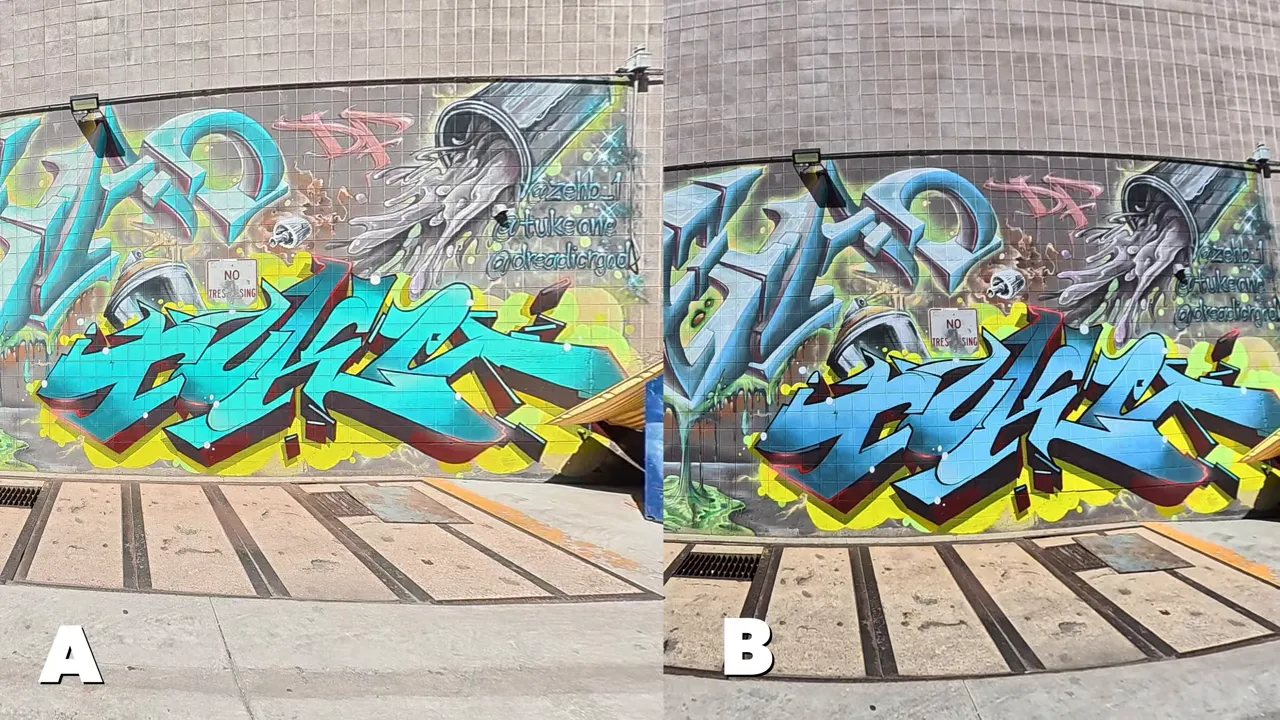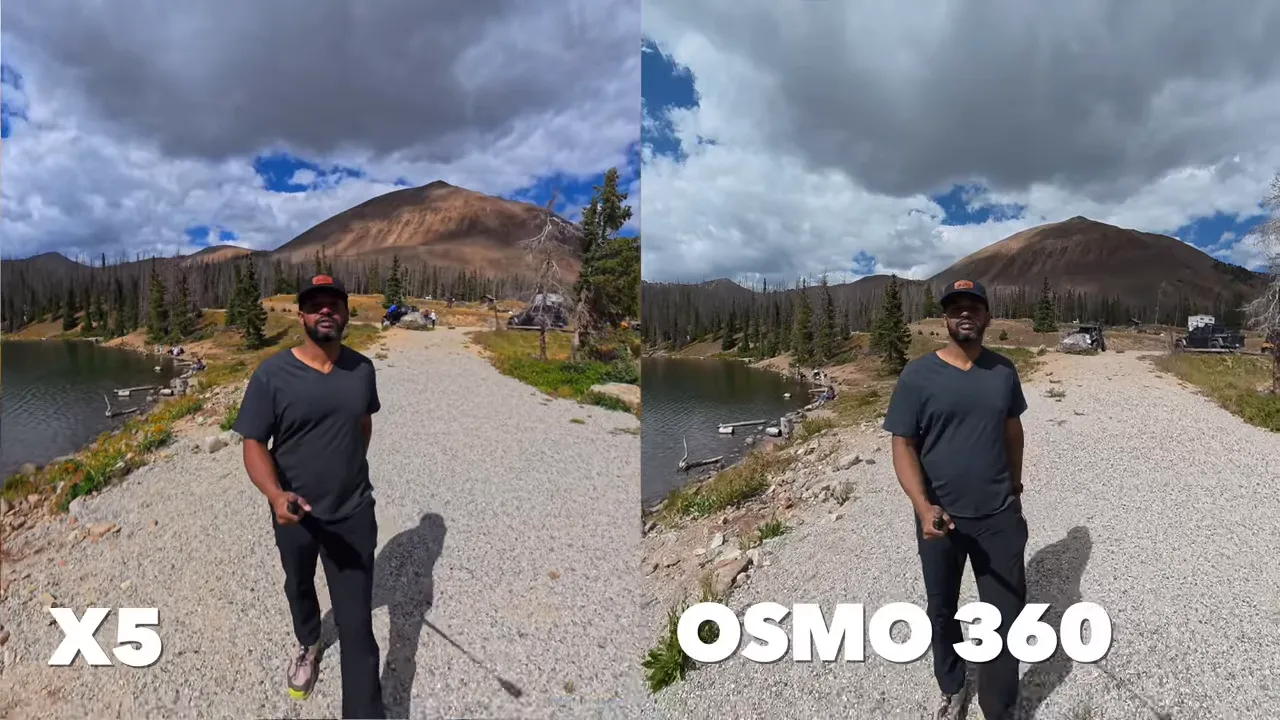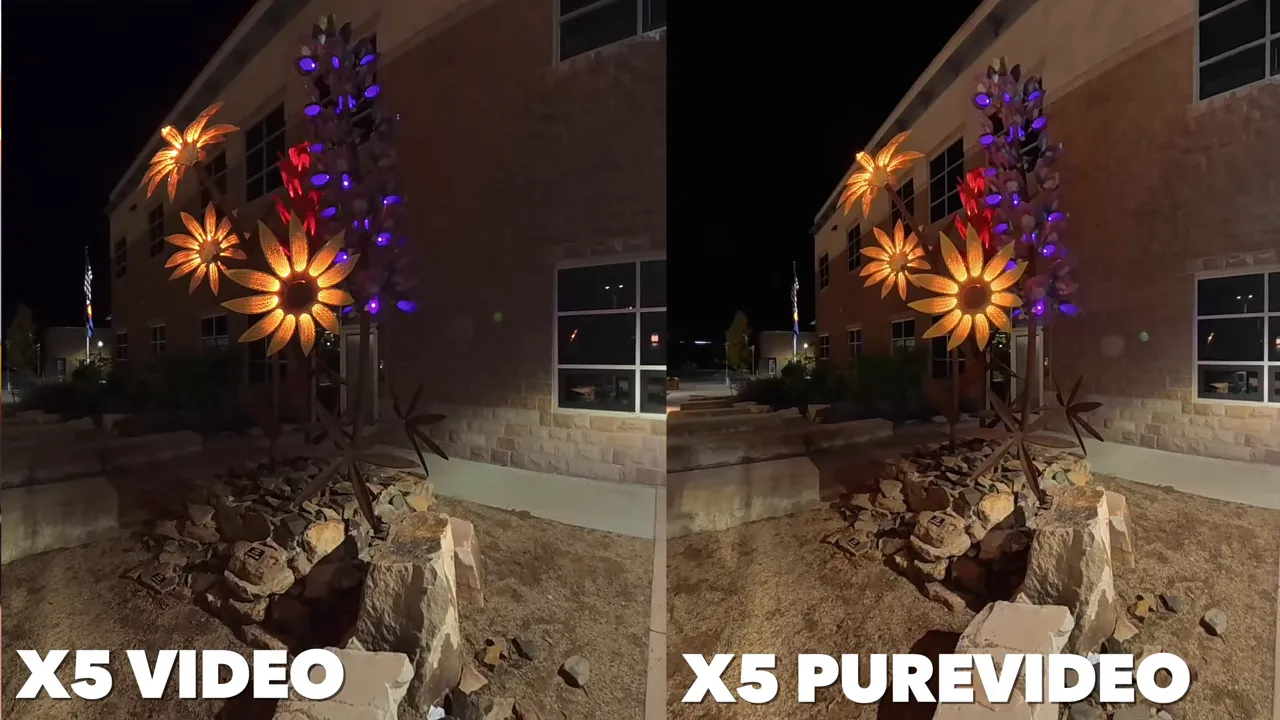
insta360 x5 vs DJI Osmo 360 — Which 360 Camera Should You Buy?
Share
insta360 x5 vs DJI Osmo 360 — Which 360 Camera Should You Buy?

If you are deciding between the insta360 x5 vs DJI Osmo 360, you have two strong options. I spent weeks shooting with both, logging hours of footage, testing modes, and living with each camera in real-world outdoor scenarios. This article covers everything I learned so you can pick the right camera without skipping the important tradeoffs. Throughout this comparison of insta360 x5 vs DJI Osmo 360 I cover image quality, low light performance, handling, lenses, audio, battery life, mounting options, underwater behavior, and editing workflow.
Quick verdict: insta360 x5 vs DJI Osmo 360
Both cameras deliver excellent image quality and great audio, but the winner for me came down to a few small, practical things that matter in day-to-day use. In short, if you want the most refined 360 ecosystem with easy lens replacement and a mature editing workflow, the insta360 x5 has the edge. If you value internal storage, magnetic charging, and a different hardware approach to 360 capture, the DJI Osmo 360 is compelling. This summary repeats the core debate: insta360 x5 vs DJI Osmo 360 — one shines for software and repairability, the other for hardware conveniences.

How I tested the two cameras
I used both cameras for several weeks across different environments: bright graffiti-covered city scenes, mountain hikes, inside vehicles while commuting, and some limited underwater checks. I recorded side-by-side footage to compare color, stitching, stabilization, and low light. I also tried accessories like wireless mics, selfie sticks, power handles, and dive cases. My testing focused on real world use cases I encounter on the road and on trails. With so many hours logged, I feel confident saying the insta360 x5 vs DJI Osmo 360 debate comes down to details, not raw image quality alone.

Image quality and color science
Both cameras look great in good light. The insta360 x5 vs DJI Osmo 360 matchup shows two different hardware philosophies. The X5 uses dual 1/1.8 inch sensors, while DJI took a different route with a single 1-inch sensor designed specifically for 360 capture. That difference shows up subtly in tone and color.
During side-by-side tests I set both cameras to their standard color profiles. One camera produced a more muted, natural look while the other favored bold, saturated tones. I asked viewers which they preferred and the reveal is straightforward: the Osmo 360 tended toward a more muted look in my comparisons, while the Insta360 X5 leaned toward richer saturation in its default profile. Both looks are valid depending on the scene — for graffiti and vibrant art I preferred the punchier Insta360 color, whereas for landscapes the Osmo 360’s more natural rendering can be more pleasing.

Stitching and artifacts
In bright daylight both cameras stitch well, but I saw occasional stitching oddities with the Osmo 360 in some scenes. In a few clips the stitch line appeared to wobble or create a slight wavy distortion on contrasting textures. It was not a constant issue, but it is something to watch for if you plan to shoot complex patterns or scenes with a lot of fine detail near the seam.

Low light: pure video vs Super Night
Low light is where the two manufacturers added dedicated modes. Insta360 calls it Pure Video on the X5 and DJI calls it Super Night on the Osmo 360. Pure Video on the X5 is impressive; it produces brighter images with noticeably reduced noise thanks to hardware processing. The X5 has three processing chips: dual pro imaging chips plus an AI chip that helps clean up noise and improve dynamic range. When lighting falls off, the X5 will even prompt you to switch to Pure Video.
DJI’s Super Night also performs admirably. It reduces noise and brings up highlights in low light scenes. Between Pure Video and Super Night, the choice often falls to personal preference: the X5’s images can feel cleaner and brighter while the Osmo 360 can produce more natural looking tones depending on settings. On my channel’s use cases — hiking, camping, overlanding — both modes served well, but Pure Video often pulled slightly ahead in very dim scenes.

Design, handling, and screens
Physical design is a major difference. The X5 is tall and slim. The Osmo 360 is shorter and wider. I prefer the slimmer X5 in hand; it gives me a better grip and feels less likely to slip. The Osmo 360’s width could be awkward for smaller hands.
Screen orientation matters too. The Osmo 360 uses a horizontal screen that stays the same whether you shoot 360 or single-lens. If you use single-lens mode a lot, the horizontal screen is an advantage because it shows more of the framing without cropping. On the X5, single-lens mode uses only part of the vertical screen so you see less live framing area. For vlogging or deliberate single-lens shots, the Osmo 360’s layout is helpful.
Mounting, magnetic charging, and accessories
Both cameras include a standard quarter inch mount, but DJI borrowed its action-camera magnetic mounting from the Osmo Action 5 for the Osmo 360. That magnetic mount is secure and makes it quick to connect and disconnect the camera. Insta360 has a similar mounting system for the Ace Pro but it is not compatible with the X5.
I really appreciated a DJI convenience feature: magnetic charging. The Osmo 360 exposes four metal contact dots on the bottom so you can magnetically charge it using DJI’s battery extension rod without plugging in a USB-C cable. It is a small convenience that adds up on long trips when you want a quick clip-on charge. Insta360 offers the FOMO power handle for long runtime, but it connects via USB-C, not magnetically.
Battery life and internal storage
Both manufacturers advertise runtime under ideal conditions. Insta360 claims around 208 minutes at 5.7K 24fps, with a hypercharge option that takes the battery to 80% in 20 minutes. DJI claims around 100 minutes at 8K 30fps and up to 190 minutes at 6K 24fps with a fast charge to 50% in 12 minutes.
In real-world use my experience was similar for both cameras. Battery life will vary based on resolution, stabilization, and environmental conditions. Insta360 sells an ultra battery for the X5 that gives a noticeable runtime bump. DJI’s smart move was making the Osmo 360 use the same battery as the Osmo Action 5. If you already own Action 5s, you can reuse batteries instead of carrying more battery types.
One standout for the Osmo 360 is internal storage: DJI built 128GB inside the camera. That has saved me a few times when I forgot a microSD card or when I needed to start recording immediately. 128GB is not endless for 360 files — they are large — but if you record with intention and offload footage daily, it is a practical convenience. I shot several full days on the Osmo 360 using internal storage and never had to buy an extra card.
Lens durability and repairability — a huge factor
Here is where the insta360 x5 vs DJI Osmo 360 decision can become decisive. 360 lenses are fragile because the dual lenses sit exposed to the world. If one lens gets scratched or cracked, your camera’s 360 capability is severely compromised. My own experience with earlier Insta360 models made me cautious about exposing lenses during adventures.
Insta360 solved this with user-replaceable lenses on the X5. You can buy a lens replacement kit and swap out a damaged lens in just minutes. I actually scratched a lens on the X5 on a trip and replaced it at my campsite in about two minutes. If I had not been able to replace it myself, the camera would have been unusable until repaired.
DJI’s Osmo 360 lenses are not user-replaceable. If you scratch a lens, you will need to send the camera in for repair. That means downtime and likely a cost you did not plan for. For me, replaceable lenses are a must-have feature for action-packed use, so the insta360 x5 vs DJI Osmo 360 advantage goes to the X5 on this point.
Audio: onboard microphones and wireless options
Both cameras have good onboard mics. The X5 has a built-in wind guard feature over a microphone which helps reduce wind noise when used with wind reduction audio settings. The Osmo 360 benefits from DJI’s ecosystem: their Mic 2 and Mic Mini work seamlessly and connect quickly. Insta360 introduced the Mic Air wireless option which is tiny, pairs fast, and provides excellent sound quality too. I tested the Mic Air and DJI Mic Mini across both camera ecosystems and both performed well.
One of my go-to setups is using a small wireless mic while the camera sits on a selfie stick behind me. The onboard mic is surprisingly effective when the camera is two or three feet away, but for interviews or clearer voice recordings I prefer using an external wireless mic. Whether you choose the insta360 x5 vs DJI Osmo 360, both support external wireless mics that deliver great results.
Underwater use and a reported lens fogging issue
Both cameras are waterproof: the X5 to 15 meters and the Osmo 360 to 10 meters. However, for true underwater 360 footage you generally need a dive case. Without the dive case the footage often fails to stitch properly because water refracts and displaces the seam area. I saw stitch failures when testing without a dive case on the Osmo 360.
There have also been reports from users of a unique problem affecting one of these cameras. Specifically, some users reported internal lens fogging in humid environments or when taken into the water, which ruined footage. I did not experience the problem personally, but it has been talked about in user communities. If you plan to do frequent underwater or highly humid shooting, pay attention to community reports and updates on firmware or hardware fixes.
Modes, frame rates, and creative options
Both cameras include the usual modes: photo, time lapse, hyperlapse, low light, and more. Neither camera supports slow motion in native 8K 360 capture. The X5’s maximum in 8K is 24fps. The Osmo 360 can do 8K at 50fps which allows you to slow footage down later to create some slow motion in post, but that requires reducing the clip speed.
If you want traditional high frame-rate slow motion you will want to use single lens mode. In single lens mode the X5 can do 4K at 60fps. The Osmo 360 offers a Boost mode that allows 4K at 120fps for dramatic slow motion in single-lens capture.
Both cameras have fun modes for action shots. Insta360 has a "Bullet Time" mode using a spinning selfie stick to create that classic frozen-space effect. DJI has a similar mode called "Vortex." Bullet Time requires an accessory to spin the camera overhead; the X5 has an established selfie stick for this while I could not find an official DJI spinning accessory on their site at the time of testing.
Editing and software workflow
Editing 360 footage is a major part of the workflow. This is where the insta360 x5 vs DJI Osmo 360 contrast becomes meaningful beyond the hardware. Insta360’s app and software ecosystem are mature, powerful, and made specifically to reduce friction when editing 360 video. Insta360 continually improves these tools so sharing and editing is faster and easier.
DJI’s app covers the essentials and does let you edit 360 footage, but it is not as refined as Insta360’s suite. If you value a smooth, quick editing pipeline and one-tap tricks for reframing 360 clips into shareable flat videos, the X5 has a head start. The X5 also has an Instaframe mode that records a normal flat 1080p video from one lens while simultaneously recording full 360 footage. You end up with both files when you stop recording — a fast workaround for car content or social posts that saves editing time, though the flat file is only 1080p and not the same ultra-high resolution as 8K 360 footage.
Accessories and ecosystem
Accessories affect how you use a camera in the field. Insta360 already has a broad accessory lineup for the X5: multiple selfie sticks, a power handle, ND filters, a dive case, and a variety of sport mounts. That extensive ecosystem is a clear advantage for users who want ready-made solutions for any scenario.
DJI included thoughtful hardware touches with the Osmo 360 — magnetic mounts, internal storage, and battery compatibility with the Action 5 — but the accessory ecosystem is younger. Over time DJI will likely catch up, but currently the insta360 x5 vs DJI Osmo 360 comparison favors Insta360 for accessory availability and third-party mount options.
Real-world use cases: which camera for what you do
If you create car content, a 360 camera is a huge time saver because you can capture both the driver and the road simultaneously. I do a lot of internal car shots for Jeep videos and the ability to record both exterior and interior views at once is a big productivity boost. The X5’s Instaframe can give you a quick flat 1080p clip without extra editing if you just want a simple upload-ready file. For higher resolution reframing, you can use the 360 file.
For outdoor creators — hikers, campers, and overlanders — both cameras are strong. I lean toward the insta360 x5 if you frequently take the camera into rough environments because replaceable lenses remove a lot of stress about scratches. If you already own DJI Action 5 batteries and prioritize convenience like magnetic charging and internal storage, the Osmo 360 is an attractive choice.
Pros and cons summary
- insta360 x5 pros: replaceable lenses, mature editing app, large accessory ecosystem, Instaframe flat video convenience, strong Pure Video low light mode.
- insta360 x5 cons: uses unique battery not compatible with some older models, no internal storage, reported lens fogging incidents by some users in specific environments.
- DJI Osmo 360 pros: internal 128GB storage, magnetic charging and mounting, battery shared with Osmo Action 5, compact hardware design, Boost mode for high frame rate single-lens slow motion.
- DJI Osmo 360 cons: lenses are not user-replaceable, occasional stitch artifacts in some scenes, younger accessory ecosystem, app not as refined for 360 editing as Insta360’s.
Final recommendation: which one should you buy?
If your top priorities are repairability, software, and a mature accessory ecosystem, choose the insta360 x5. For me the deciding factors were replaceable lenses and the editing workflow. Those two things solved my two biggest pain points with 360 cameras: lens damage fear and editing friction. Because Insta360 lets you swap a lens in minutes and gives you powerful software that speeds up reframing and sharing, the X5 pulled ahead in my personal workflow.
If you prefer hardware conveniences like internal storage, shared batteries with the Action 5 ecosystem, magnetic charging, and a horizontal screen for single-lens framing, the DJI Osmo 360 is excellent. It is a very compelling first 360 camera from DJI and I expect its ecosystem to grow quickly.
Ultimately it comes back to how you work. Ask yourself these questions when choosing between insta360 x5 vs DJI Osmo 360:
- Do you need user-replaceable lenses because you shoot in harsh environments?
- Is a refined app and fast editing pipeline important to you?
- Do you already own DJI Action 5 batteries or want magnetic charging?
- Will you mostly shoot 360 or single-lens high frame-rate slow motion?
Answer those and you will land on the best camera for your use. For my outdoor content — hiking, camping, overlanding — the insta360 x5 solved the biggest problems I face, so that is the pick I reach for most often. But both cameras are excellent and each has clear strengths worth considering.
Practical tips if you buy either camera
- Carry at least one spare battery and a way to fast charge on the road. Both manufacturers offer fast charging options.
- Bring a small protective pouch or cover for the exposed 360 lenses and consider buying replacement lenses for the X5 if you shoot rough trails.
- Test your wireless mic setup before hitting remote locations so you do not rely on an unproven connection when you need audio.
- If you plan swim, snorkel, or dive shoots, invest in an official dive case. Without it you will likely see stitch failures underwater.
- When shooting in mixed lighting (like inside a car facing out a bright window), consider adding fill light or opening a sunroof to reduce exposure extremes.
Closing thoughts on insta360 x5 vs DJI Osmo 360
Both the insta360 x5 vs DJI Osmo 360 battle offers compelling choices. Insta360 brings polish in software and repairability, while DJI brings thoughtful hardware touches and convenience features. I use both in different scenarios. If you want one recommendation: for most users who prioritize long-term use in unpredictable environments and fast editing, the insta360 x5 is the safer, more flexible pick. If you lean toward hardware convenience, magnetic charging, internal storage, and shared batteries, the DJI Osmo 360 is an excellent first 360 camera from DJI.
I hope this detailed comparison helps you decide. Whichever camera you pick, both will let you capture immersive footage you could not get with a traditional action camera. Enjoy the process, protect your lenses, and make great content out on the trails and roads.
